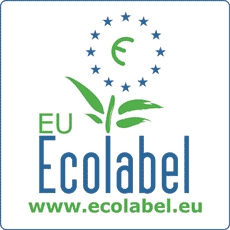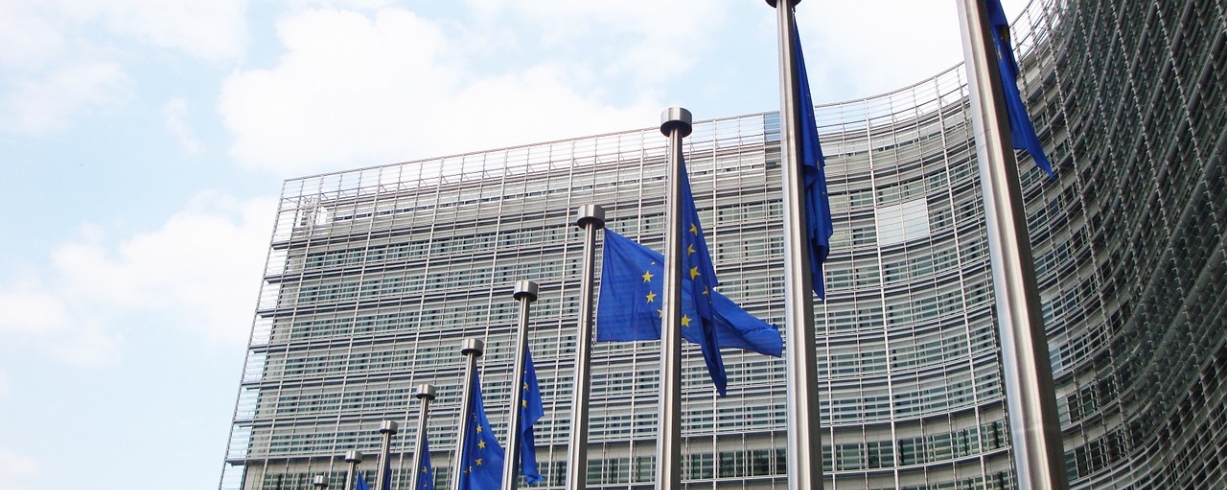 On February 18-19, 2020, another meeting of the European Union Ecolabelling Board (EUEB) was held. The EUEB shall contribute to the development and revision of EU Ecolabel criteria.
On February 18-19, 2020, another meeting of the European Union Ecolabelling Board (EUEB) was held. The EUEB shall contribute to the development and revision of EU Ecolabel criteria.
The subject of the last meeting was, among others presentation of final draft amended criteria for the three product groups referred to below.
EU Ecolabel criteria for printed paper, office paper and paper shopping bags
Dr Małgorzata Kowalska, an expert of the Joint Research Center, presented the latest version of the COMMISSION draft decision of xxxx establishing the EU Ecolabel criteria for printed paper, office paper and paper shopping bags.
The revised EU Ecolabel criteria aim to use more sustainably produced paper, obtained from sustainably managed forests or recycled materials. The new criteria are based on life cycle analysis and aim to promote energy-saving production processes that provide reduced emissions of substances that contribute to photochemical oxidation, toxicity, abiotic depletion, acidification, eutrophication and climate change. The criteria are also aimed at limiting the use of hazardous substances, reducing emissions generated during the printing process, including reducing VOC emissions, reducing the amount of paper waste generated in the printing process, as well as increasing recycling options, which will facilitate the transition to a more circular economy .
Although the use of chemical products and the release of contaminants is an unavoidable part of the production process, the EU Ecolabel product guarantees to the consumer that the use of such chemicals and associated emissions is limited to the extent technically possible without compromising the suitability for use of the final product .
The product group ‘printed paper, office paper and paper shopping bags’ includes the following products:
(a) printed paper products that contain at least 90% by weight of paper, cardboard or paper substrates, except books, catalogs, brochures or forms, which contain at least 80% by weight of paper or paperboard or paper substrates.
(b) envelopes that contain at least 90% by weight of paper, cardboard or paper-based substrates;
(c) paper shopping bags, including wrapping paper, which contain 100% by weight of paper, cardboard or a paper-based substrates;
(d) office stationery, including binders, which contain at least 70% by weight of paper, paperboard or paper based cardboard, with the exception of suspension files and files with metal clasp.
The criteria for awarding the EU Ecolabel to ‘printed paper, office paper and paper shopping bags’ include in particular requirements regarding: substrates, restrictions on hazardous substances, recycling options, emissions, waste, energy consumption, training, suitability for use; product information, information appearing on the EU Ecolabel.
The Commission Decision of xxxx establishing the EU Ecolabel criteria for printed paper, office paper and paper shopping bags will be voted in June 2020. Then, after passing the Inter-servis consultation procedures (ISC) in the Commission, it will enter into force at the turn of 2020/2021. The EU Ecolabel criteria for printed paper, office paper and paper shopping bags, and the related assessment and verification requirements for each product group, are expected to remain valid until 31 December 2028, taking into account the innovation cycle for the two product groups, which they include .
At the same time, Decision 2014/256 / EU concerning processed paper products will be repealed and Decision 2012/481 / EU concerning printed products will be replaced by a new decision. An 18-month transition period is foreseen for producers who have been awarded the EU Ecolabel on the basis of the criteria set out in Decision 2014/256 / EU or Decision 2012/481 / EU respectively, so that they have sufficient time to adapt their products to the new criteria and requirements.
Televisions, monitors and screens with Digital Signage
The JRC expert discussed the latest changes to the final version of the amended COMMISSION DECISION of xxx establishing the EU Ecolabel criteria for “electronic displays” (COMMISSION DECISION of XXX establishing the EU Ecolabel criteria for electronic display). The new decision will replace the Commission Decision of 12 March 2009 establishing the revised ecological criteria for the award of the EU Ecolabel to televisions (2009/300 / EC). The amended decision “electronic displays” significantly extends its product range and includes, in addition to televisions, monitors and screens with Digital Signage.
The criteria for awarding the EU Ecolabel for “electronic displays” include in particular aspects such as: energy consumption including energy saving and energy management; restrictions on hazardous substances, including excluded or restricted substances; measures to reduce the supply chain of fluorinated greenhouse gas (GHG) emissions; repair option and commercial warranty; decommissioning management; material selection and information to improve recycling options; design for disassembly and recycling; corporate social responsibility, working conditions during production; use of ‘conflict-free minerals’ during production; information criteria, including user instructions and information appearing on the eco-label.
The Commission Decision establishing the EU Ecolabel criteria for ‘electronic displays’ states that the criteria, as well as the related assessment and verification requirements, should remain in force until 31 December 2028, taking into account the innovation cycle for this product group. At the same time, the licences for the EU Ecolabel awarded in accordance with the criteria set out in the old decision can be used for 12 months from the date of adoption of the new decision.
Hard coverings
The EUEB presented the latest version of the Commission Decision of xxxxx establishing the ecological criteria for the award of the EU Ecolabel to hard coverings (COMMISSION DECISION of XXX establishing the EU Ecolabel criteria for hard covering products). The amended decision will replace the Commission decision of 9 July 2009 establishing the ecological criteria for the award of the EU Ecolabel to hard coverings (2009/607 / EC). The amendment aims to reflect the best practices on the market for the extended product group and to take into account innovations introduced in this area.
The new decision extends the product group ‘hard coverings’ to products made from the same materials or made using similar production techniques that should be considered ‘hard coverings’ when used for similar basic purposes.
The ‘hard coverings’ product group includes floor tiles, wall tiles, roof tiles, masonry (brick and blocks), pavement, curbs, countertops, dressing tables and kitchen countertops for internal or external use. Products with a hard coating should be made of one of the following materials: natural stone, agglomerated stone, ceramic; precast concrete.
In the production of natural stone and precast concrete, a significant part of the environmental impact is associated with specific supply chain players who currently do not have a direct incentive to comply with the EU Ecolabel criteria. After consulting the EUEB, it was concluded that the award of the EU Ecolabel should be allowed for intermediate products in the natural stone sector (e.g. decorative or dimensional stone blocks produced in quarries) and in the precast concrete sector. This will simplify assessment and verification by competent bodies when such intermediate products are sold to license holders of the EU Ecolabel. As a result of consultations, the EUEB also introduced a scoring system based on achieving minimum mandatory environmental performance and achieving optional compliance with additional criteria. In addition to compliance with all mandatory requirements, a minimum number of points must be obtained for the product to be awarded the EU Ecolabel. The adoption of a point-based assessment method provides a more flexible approach to awarding the EU Ecolabel for the best ecological products on the market, while also giving greater weight to criteria related to the most significant environmental impacts, which may encourage license holders to continually improve the environment and increase environmental performance. In addition, the scoring system will contribute to greater potential recognition of the EU Ecolabel (as ISO 14024 Type I Ecolabel) in green building assessment programs (such as BREEAM, LEED, DGNB, HQE, VERDE, etc.), offering the possibility of distinguishing between products with higher or lower environmental ratings. In the scoring system, more importance is attached to the criteria related to the greatest environmental impact at the production stage. Consumer information requires attention to the correct installation and product specification, in line with the overall approach to life cycle analysis.
The implementation of these criteria will control and reduce emissions that contribute to photochemical oxidation, human toxicity, abiotic depletion, eutrophication, acidification and climate change. The criteria require raw materials to be processed in such a way as to minimize air emissions, energy consumption and ensure the disposal of process waste.
The Ecolabel criteria for this product group are focused on the best environmentally friendly hard coverings on the market, focusing on the main environmental impacts associated with their production. In particular, the criteria aim to reduce the risks associated with energy consumption (climate change, acidification, depletion of the ozone layer, depletion of non-renewable resources), reduce the health risks associated with dust emissions, reduce water consumption and improve material efficiency. Therefore, the criteria take into account the requirements of regarding the maintenance of energy reserves and maximum limits on specific energy consumption; the use of renewable energy sources, setting specific limits for SOx, NOx and dust emissions from processes in which fuel is burned; requirements for best management practices for processes in which dust originates from diffuse sources; requirements for the recycling of process waste water or water consumption limits; requirements for the minimum reuse of process waste and recycled or secondary materials. Due to the variety of materials and related production processes that fall within the scope of the Commission decision, the criteria for awarding the EU Ecolabel for ‘hard covers’ include both horizontal criteria common to all materials and material-specific criteria that are directly related to the production process . The combination of mandatory and optional criteria applies when points are awarded for exceeding minimum mandatory requirements or for meeting optional criteria. To obtain the EU Ecolabel, applicants must meet all mandatory requirements and achieve the minimum number of points required for each specific product.
The Commission decision establishing the EU Ecolabel criteria for “hard covers” will enter into force at the turn of 2020/2021 and will remain in force until December 31, 2028, taking into account the innovation cycle for this product group. At the same time, permits for the EU Ecolabel awarded in accordance with the criteria set out in the old decision can be used for 12 months from the date of adoption of the new decision.
The records regarding the periods of validity of the criteria may change due to the fact that many EUEB members have found these periods too long. However, the European Commission considered it appropriate to adopt a relatively longer period of validity of the criteria due to the fact that the promotion of the criteria will last about 2 years, and the next review should be started at least 2 years before the end of the criteria.
Written by: Joanna Tkaczyk
More about the European Ecolabel European certification – https://www.pcbc.gov.pl/pl/ecolabel




 On February 18-19, 2020, another meeting of the European Union Ecolabelling Board (EUEB) was held. The EUEB shall contribute to the development and revision of EU Ecolabel criteria.
On February 18-19, 2020, another meeting of the European Union Ecolabelling Board (EUEB) was held. The EUEB shall contribute to the development and revision of EU Ecolabel criteria.